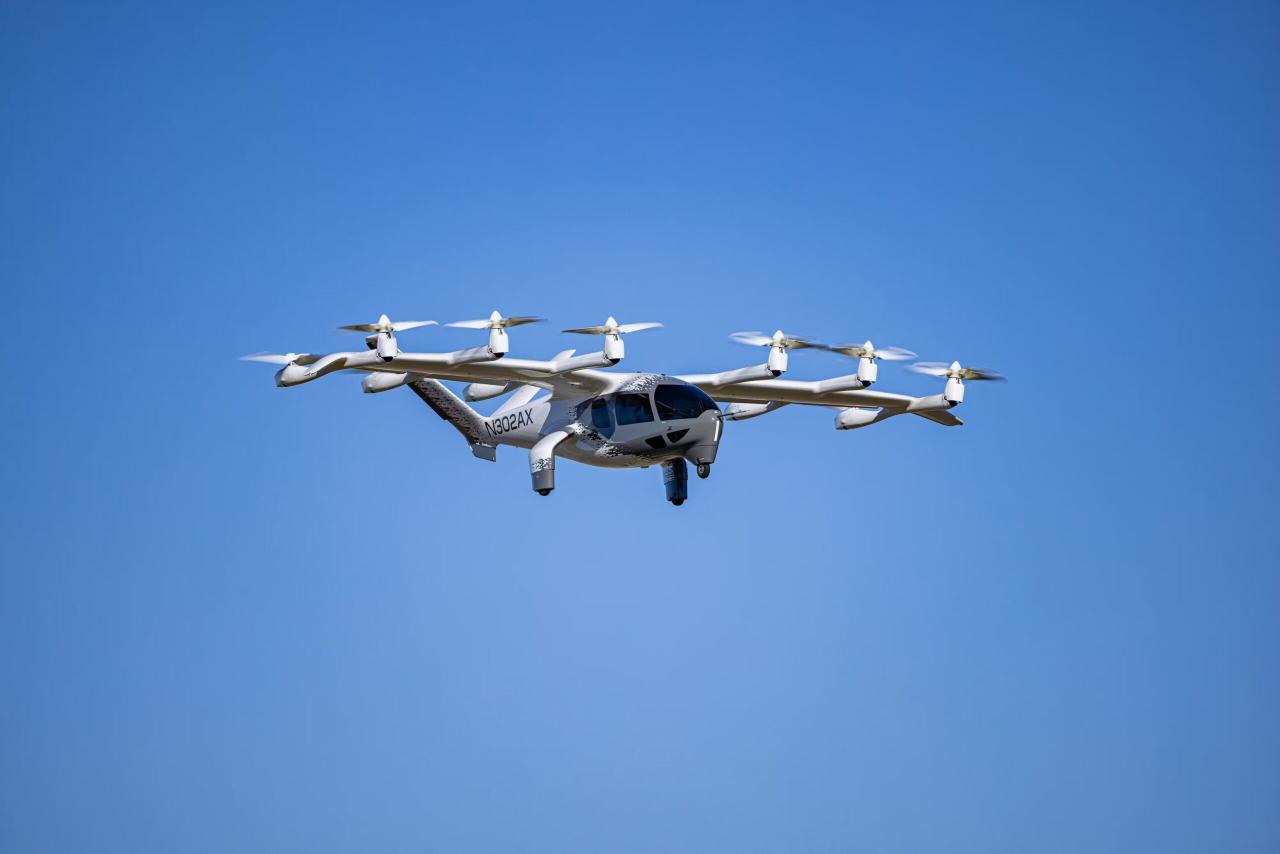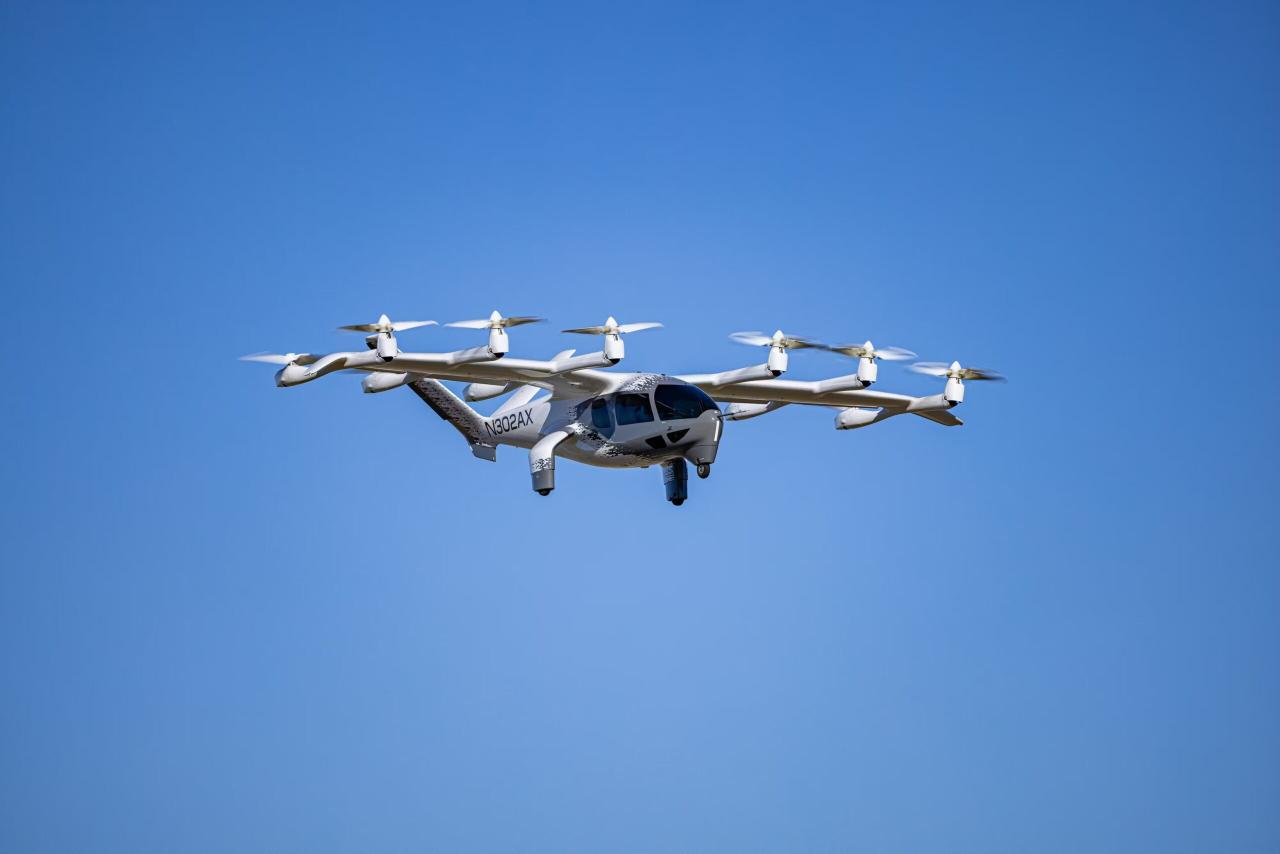Archer Aviation, a pioneering force in the electric vertical takeoff and landing (eVTOL) aircraft sector, is rapidly reshaping urban air mobility. This exploration delves into Archer’s innovative business model, technological advancements, market positioning, and future prospects, providing a comprehensive overview of this exciting company and its impact on the future of transportation.
Archer Aviation, a key player in the advanced air mobility sector, is developing innovative electric vertical takeoff and landing (eVTOL) aircraft. The recent news regarding drone activity in New Jersey, as detailed in this article drones over new jersey solved , highlights the growing complexity of airspace management. This underscores the importance of Archer’s commitment to safe and efficient integration of eVTOLs into the broader aviation landscape.
From its inception to its current market standing, we examine Archer Aviation’s journey, highlighting key milestones, technological breakthroughs, and the strategic decisions that have shaped its trajectory. We will also analyze its competitive landscape, financial performance, and sustainability initiatives, painting a detailed picture of this dynamic player in the burgeoning eVTOL market.
Archer Aviation Company Overview
Archer Aviation is an American electric vertical takeoff and landing (eVTOL) aircraft company focused on developing and commercializing sustainable air mobility solutions. The company’s business model centers on designing, manufacturing, and operating a fleet of eVTOL aircraft for urban air mobility (UAM) services, primarily targeting short-haul passenger transportation within metropolitan areas.
Archer Aviation’s Business Model and Core Offerings
Archer’s core offering is its eVTOL aircraft, the Midnight, designed for passenger transport. The business model encompasses aircraft manufacturing, operation of its own air taxi service, and potential licensing or sales of its aircraft to other operators. This integrated approach aims to control the entire value chain, from design and production to service delivery.
Archer Aviation’s History and Key Milestones
Founded in 2018, Archer Aviation has rapidly progressed through key milestones. Significant achievements include securing substantial funding rounds, completing successful test flights of its prototype aircraft, and establishing partnerships with major aerospace companies and infrastructure providers. The company’s trajectory demonstrates ambitious growth and a commitment to bringing its eVTOL technology to market.
Comparative Analysis of Archer Aviation and its Competitors

Archer Aviation competes with several other companies in the burgeoning eVTOL market. A comparison highlights their relative positions:
| Company Name | Market Cap (USD, approximate) | Stage of Development | Key Technology |
|---|---|---|---|
| Archer Aviation | Variable, check financial news for current data | Late-stage development/commercialization | Fixed-wing eVTOL design, distributed electric propulsion |
| Joby Aviation | Variable, check financial news for current data | Late-stage development/commercialization | Tiltrotor design, electric propulsion |
| Lilium | Variable, check financial news for current data | Late-stage development/commercialization | Multicopter design, electric propulsion |
| EHang | Variable, check financial news for current data | Commercialization | Autonomous eVTOL, electric propulsion |
Technology and Innovation
Archer Aviation’s technological advancements are central to its competitive advantage. The company leverages cutting-edge engineering and design principles to create safe, efficient, and sustainable eVTOL aircraft.
Design and Functionality of Archer’s eVTOL Aircraft
Archer’s Midnight eVTOL aircraft is a fixed-wing design with distributed electric propulsion. This configuration offers a balance of efficiency and maneuverability, suitable for urban environments. The aircraft is designed for a specific passenger capacity, incorporating features for passenger comfort and safety.
Technological Advancements and Safety Features

Archer employs advanced technologies in its aircraft, including redundant systems, advanced flight control algorithms, and sophisticated sensor integration. These features enhance safety and reliability. Specific examples include fail-safe mechanisms for critical components and advanced obstacle avoidance systems.
Comparison of Archer’s Propulsion System with Other eVTOL Propulsion Systems
Different eVTOL companies utilize varying propulsion systems. Archer’s distributed electric propulsion offers several advantages and disadvantages compared to other approaches:
- Archer (Distributed Electric): High redundancy, relatively quiet operation, potential for higher efficiency.
- Tiltrotor (e.g., Joby): High speed capability, but complex mechanism and higher noise levels.
- Multicopter (e.g., Lilium): Excellent maneuverability at low speeds, but typically lower range and efficiency.
Market Position and Potential
Archer Aviation is strategically positioned to capitalize on the growing UAM market. Understanding the target markets and regulatory landscape is crucial to assessing its potential.
Archer Aviation’s Target Markets
Archer’s primary target market is urban commuters in major metropolitan areas. The company aims to provide a faster and more efficient alternative to ground transportation, catering to time-sensitive travelers.
Market Size and Growth Opportunities
The UAM market is projected to experience significant growth in the coming decades. Archer is poised to benefit from this expansion, given its technological advancements and strategic partnerships. Specific market size estimations vary depending on the source, but the overall trend points towards substantial market potential.
Regulatory Landscape and its Impact
The regulatory environment for eVTOL operations is still evolving. Archer actively engages with regulatory bodies to ensure compliance and shape the regulatory framework. The speed and clarity of regulatory approvals will significantly impact the company’s timeline for commercial operations.
Financial Performance and Investment
Archer Aviation’s financial performance and investment landscape are critical indicators of its future prospects. Analyzing these aspects provides insight into the company’s viability and investor confidence.
Archer Aviation’s Financial Performance
Archer’s financial performance is subject to change and is best reviewed through official financial reports and reputable financial news sources. Key metrics to consider include revenue, expenses, and cash flow. Profitability is a key factor for long-term sustainability.
Archer Aviation, a prominent player in the advanced air mobility sector, is developing innovative electric vertical takeoff and landing (eVTOL) aircraft. Recent news, however, highlights the evolving regulatory landscape; an incident involving a drone shot down in NJ underscores the safety concerns and complexities surrounding unmanned aerial vehicles, which are relevant to Archer’s future operations and the broader eVTOL industry.
Ultimately, Archer’s success hinges on navigating these emerging challenges.
Funding Sources and Investment Strategies
Archer has secured funding through a combination of private investments, strategic partnerships, and potential future public offerings. The company’s investment strategy focuses on research and development, manufacturing scale-up, and operational expansion.
Investor Sentiment and Future Prospects, Archer aviation
The overall investment outlook for Archer Aviation is positive, driven by the potential of the UAM market and the company’s technological advancements. However, significant risks remain, including regulatory hurdles, competition, and the need to achieve operational profitability. Successful execution of its business plan and regulatory approvals are critical factors influencing investor sentiment.
Operational Strategies and Challenges: Archer Aviation
Archer Aviation’s operational strategies and the challenges it faces are crucial to its success. Addressing these challenges effectively is essential for achieving its commercial goals.
Manufacturing and Production Processes
Archer’s manufacturing strategy involves establishing efficient and scalable production processes for its eVTOL aircraft. This includes securing supply chains, implementing quality control measures, and optimizing manufacturing workflows.
Key Operational Challenges

Key operational challenges include scaling up manufacturing to meet anticipated demand, establishing efficient maintenance and repair procedures, and developing robust safety protocols for flight operations.
Potential Solution to a Significant Operational Challenge
A significant challenge is managing the complex supply chain for specialized components. A potential solution involves diversifying suppliers, establishing strategic partnerships with key component manufacturers, and developing robust inventory management systems to mitigate supply chain disruptions.
Sustainability and Environmental Impact
Archer Aviation’s commitment to sustainability and its efforts to minimize the environmental impact of its operations are essential aspects of its long-term viability.
Commitment to Sustainability and Environmental Responsibility
Archer is committed to developing sustainable air mobility solutions. This commitment is reflected in the design of its aircraft, which prioritizes efficiency and reduced emissions. The company also aims to minimize its operational environmental footprint.
Environmental Impact of Archer’s Operations and Products
The environmental impact of Archer’s operations includes energy consumption during manufacturing, flight emissions (though electric propulsion significantly reduces these compared to traditional aircraft), and waste generation. The company aims to mitigate these impacts through sustainable practices.
Life Cycle Assessment of Archer’s Aircraft
A simplified textual representation of Archer’s aircraft life cycle assessment might include:
Raw Material Acquisition: Environmental impact from mining and processing of materials.
Manufacturing: Energy consumption, waste generation, and emissions from the manufacturing process.
Operation: Emissions during flight (primarily from electricity generation, if not fully renewable), noise pollution.
End-of-Life: Recycling and disposal of aircraft components, minimizing landfill waste.
Future Outlook and Predictions
Projecting Archer Aviation’s future growth trajectory requires considering various factors, including market trends, technological advancements, and regulatory developments.
Future Growth Trajectory
Based on current trends, Archer Aviation is expected to experience significant growth if it successfully navigates regulatory hurdles and achieves operational efficiency. The expansion of its fleet, the establishment of UAM service routes, and the potential for international expansion will be key drivers of future growth.
Potential Risks and Opportunities
| Risk/Opportunity | Potential Impact |
|---|---|
| Regulatory delays or setbacks | Delayed commercial operations, reduced market share |
| Increased competition | Reduced market share, price pressure |
| Technological challenges | Increased development costs, potential delays |
| Successful technology adoption and market demand | Rapid growth, significant market share |
| Strategic partnerships | Access to capital, technology, and market access |
Archer Aviation’s ambitious vision for the future of air travel is undeniably captivating. While challenges remain in navigating the regulatory landscape and achieving mass production, the company’s innovative technology, strategic partnerships, and strong investor interest suggest a promising future. The successful commercialization of its eVTOL aircraft could revolutionize urban transportation, offering efficient, sustainable, and convenient air travel options for commuters and businesses alike.
The coming years will be pivotal in determining Archer’s ultimate success, and the journey promises to be one filled with both innovation and significant impact.
FAQ Resource
What is Archer Aviation’s primary aircraft model?
Archer’s primary model is the Midnight, a battery-electric eVTOL aircraft.
Where is Archer Aviation headquartered?
Archer Aviation is headquartered in the United States.
What are Archer Aviation’s main competitors?
Key competitors include Joby Aviation, Lilium, and Vertical Aerospace.
When is Archer Aviation expected to begin commercial operations?
Archer aims to begin commercial operations in the coming years, with exact timelines subject to regulatory approvals and manufacturing progress.
